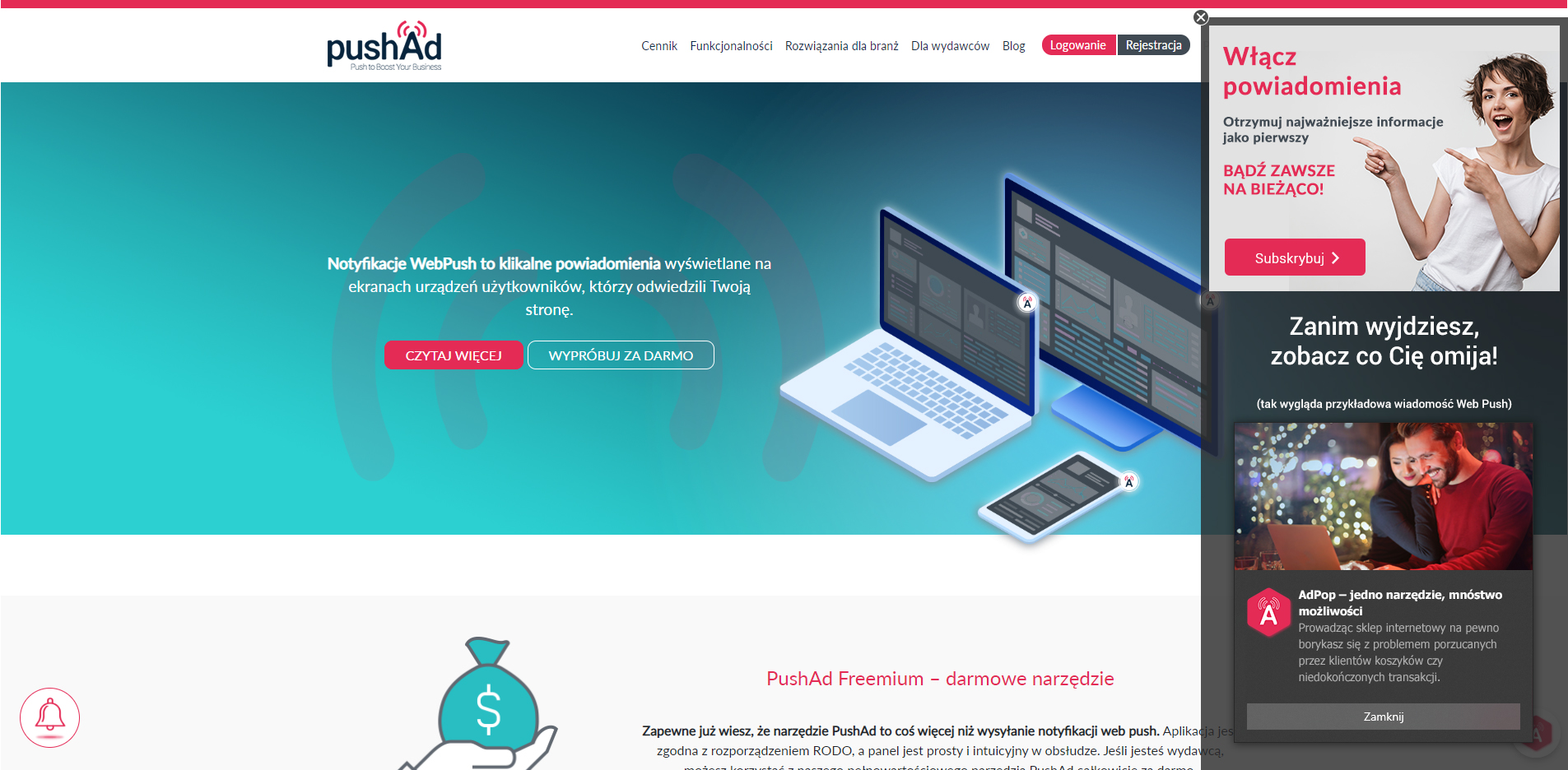Firefox and Chrome web browsers have started blocking pop-ups – web push notifications. Many publishers or online store owners have been using push notifications to communicate with their audience or customers. What tool will now be suitable for communication?
An answer to web push notification being blocked by Chrome and Firefox is our AdPop tool. Importantly, as a PushAd client, now you can use a free version of AdPop, currently available in beta.
Our AdPop Website Layer is a tool aimed at broadly understood increasing user’s engagement on visited websites.
Website Layer is a slide-in window appearing on the side of the screen. Our clients often use AdPop to recover abandoned carts during website exit intent or to display product recommendations. However, the tool will work well as an alternative to subscription banners whose task is to obtain consents to sign up for web pushes and receive notifications in this form.
Why is Website Layer a perfect solution to pop-ups asking for permission to receive web push notifications, currently blocked by Chrome and Firefox?
When a user attempts to exit the website, the Website Layer is displayed on the side of the screen. In the case of a user who has not yet opted in to receive web push notifications, this may be a message encouraging them to stay on the site, and moreover to subscribe to the subscriber base. Our system enables to define various scenarios of AdPop Website Layer operation – we can initiate its display on the page with specific delay, make it dependent on user’s particular interaction with the website (e.g. page scrolling), indicate specific pages it can be displayed on or define on which page during a given session it should appear (e.g. on the third subpage at the earliest).
AdPop Website Layer also works on mobile devices, but there we cannot make its display dependent on detecting the site exit intent. All the other above-mentioned scenarios are also available on mobile devices.
The main advantage of using AdPop Website Layer to collect consents to receive web push notifications is the possibility of postponing its display on the site. When the notification is not shown immediately after a user enters the website, the likelihood of consent significantly increases, and simultaneously let us comply with the recently introduced restrictions on the display of notifications of this kind by Chrome and Firefox. Therefore, we do not discourage a user by inviting him or her to subscribe to the subscriber base when they have not yet familiarised with the page content. Only when they interact with the website, scroll it, go to subsequent subpages or even make an attempt to leave the page, is a dedicated message displayed to them.
Here’s an example of Website Layer:



